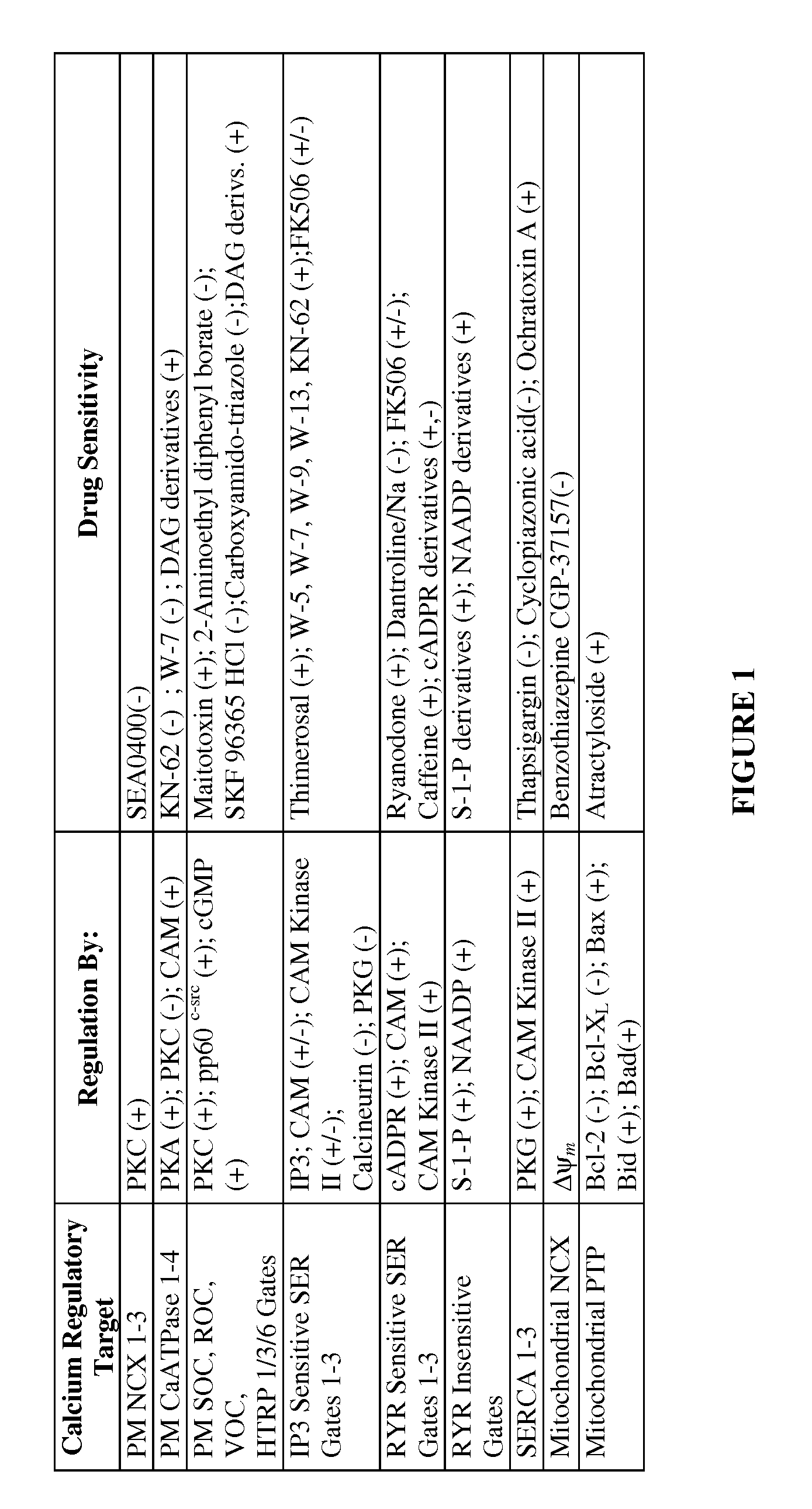Methods For The Selective Treatment Of Tumors By Calcium-Mediated Induction Of Apoptosis
a selective treatment and tumor technology, applied in the field of medical treatments, can solve the problems of pharmacological manipulation of ca fluxes in humans fraught with undesirable side effects, abnormal expression of many proteins, and large controversy and confusion, and achieve the effect of promoting ca++ leakage and apoptosis, exceeding the capacity of all such depots, and shortening the tim
- Summary
- Abstract
- Description
- Claims
- Application Information
AI Technical Summary
Benefits of technology
Problems solved by technology
Method used
Image
Examples
example 1
[0063]A patient is administered orally a combination of 2 or 3 stable small molecule drugs (for example, activators of Protein Kinase C and inhibitors of CAM-dependent Protein Kinase II and / or Calcineurin) at synergistic and submaximal concentrations. The dosage of each drug is calculated to provide clinically effective blood levels for a period of 3 to 5 hours based on animal and Phase I trials. This short duration of treatment is based upon the minimum time required to force tumor cells into irreversible commitment to apoptosis. Resorption of a patient's tumor can be followed at appropriate intervals thereafter using ultra-sensitive techniques such as PET or SPECT molecular imaging. This regimen can be repeated daily if required based upon the severity, if any, of side-effects and by the rate of tumor shrinkage. Given the thresholds of sensitivity to calcium-induced apoptosis between normal and cancerous cells, such side-effects are likely to be fairly innocuous.
example 2
[0064]A patient is administered effective drug combinations by IV in order to achieve rapid and therapeutically effective blood levels that can be more precisely controlled in dosage and time in order to further reduce possible side effects. Again, drug exposure times need not be greater than 5 hours and may be as short as 3 hours based on in vitro experimental results. Such a treatment regimen can be repeated as often as necessary provided side-effects remain low or absent to ensure absolute eradication of all malignant cells any where in the body. Because the mechanisms which trigger apoptosis are also obligatory for cell cycling and because treatment regimes are so short, it is highly unlikely that mutations in tumor cells can be selected for since such mutations will also arrest cell cycle traverse. Because drug exposure times can be kept so short with even a one-time treatment being therapeutically effective, and because cells cannot develop mutational immunity to such drugs, t...
PUM
| Property | Measurement | Unit |
|---|---|---|
| Digital information | aaaaa | aaaaa |
| Level | aaaaa | aaaaa |
| Plasma power | aaaaa | aaaaa |
Abstract
Description
Claims
Application Information
 Login to View More
Login to View More - R&D
- Intellectual Property
- Life Sciences
- Materials
- Tech Scout
- Unparalleled Data Quality
- Higher Quality Content
- 60% Fewer Hallucinations
Browse by: Latest US Patents, China's latest patents, Technical Efficacy Thesaurus, Application Domain, Technology Topic, Popular Technical Reports.
© 2025 PatSnap. All rights reserved.Legal|Privacy policy|Modern Slavery Act Transparency Statement|Sitemap|About US| Contact US: help@patsnap.com

